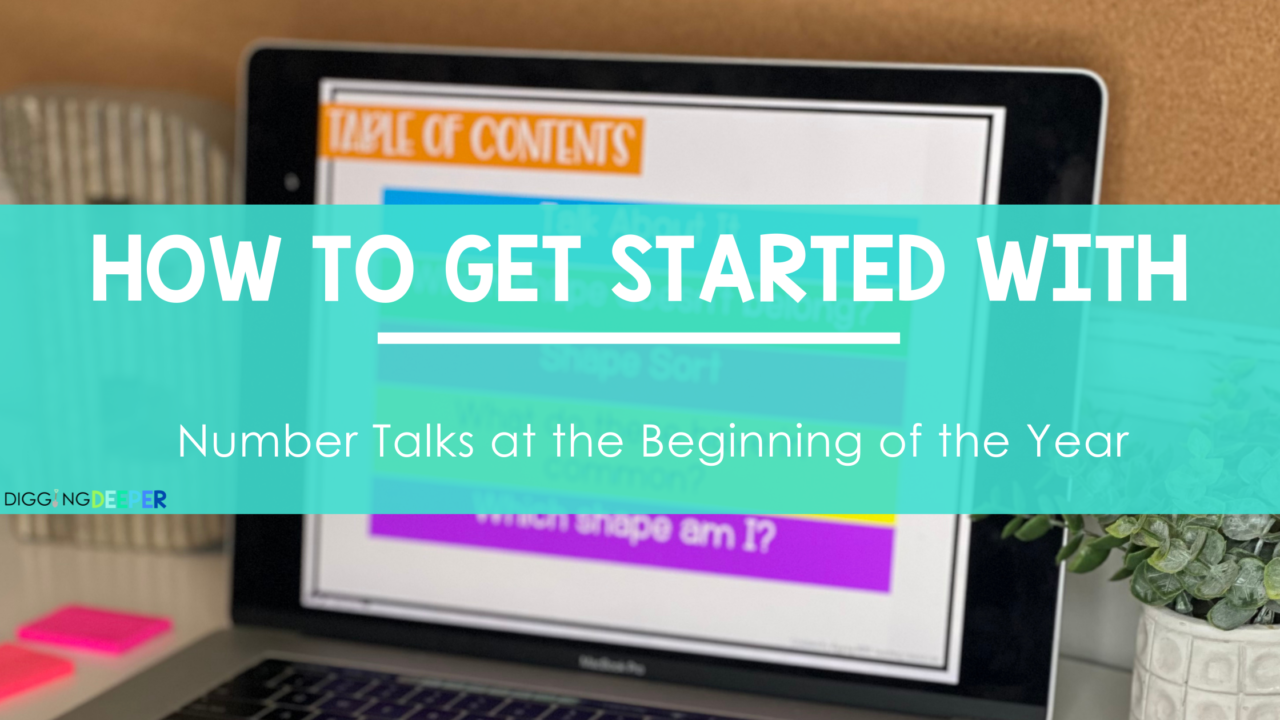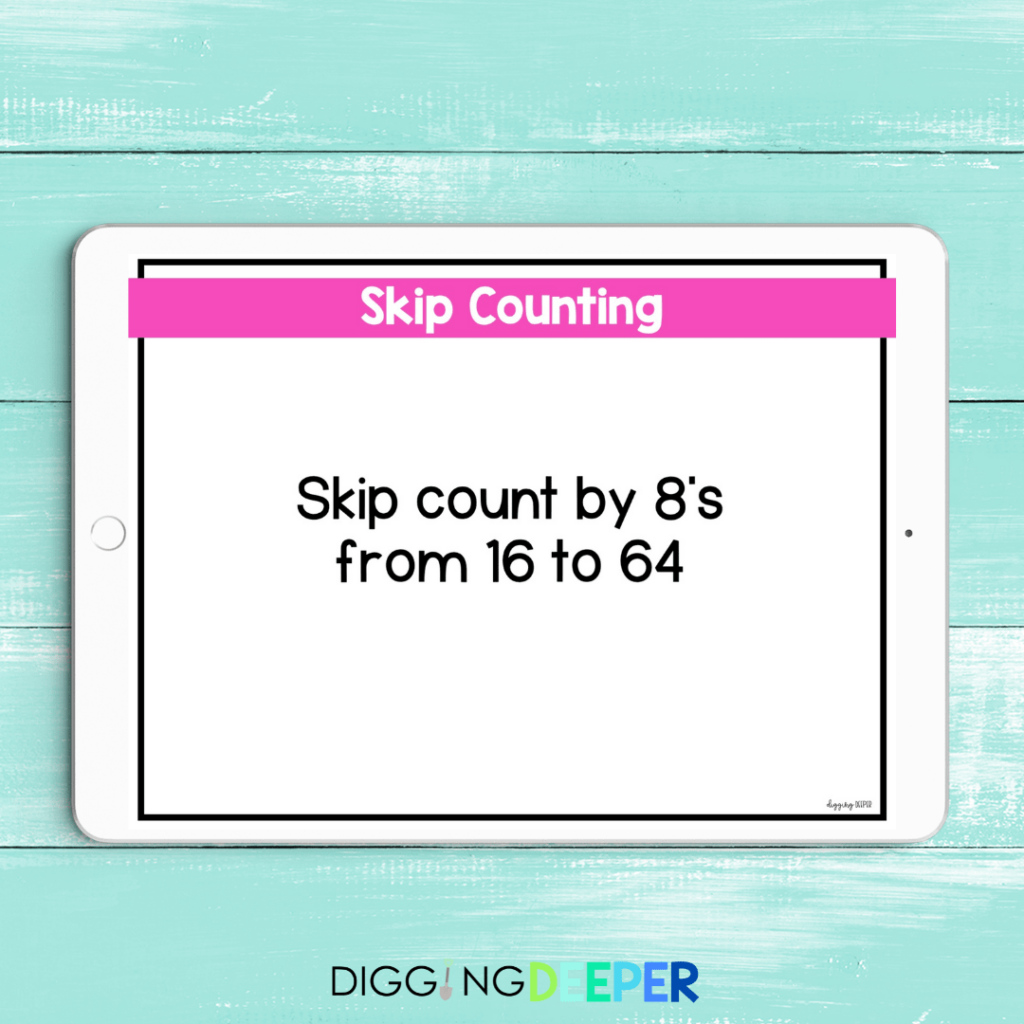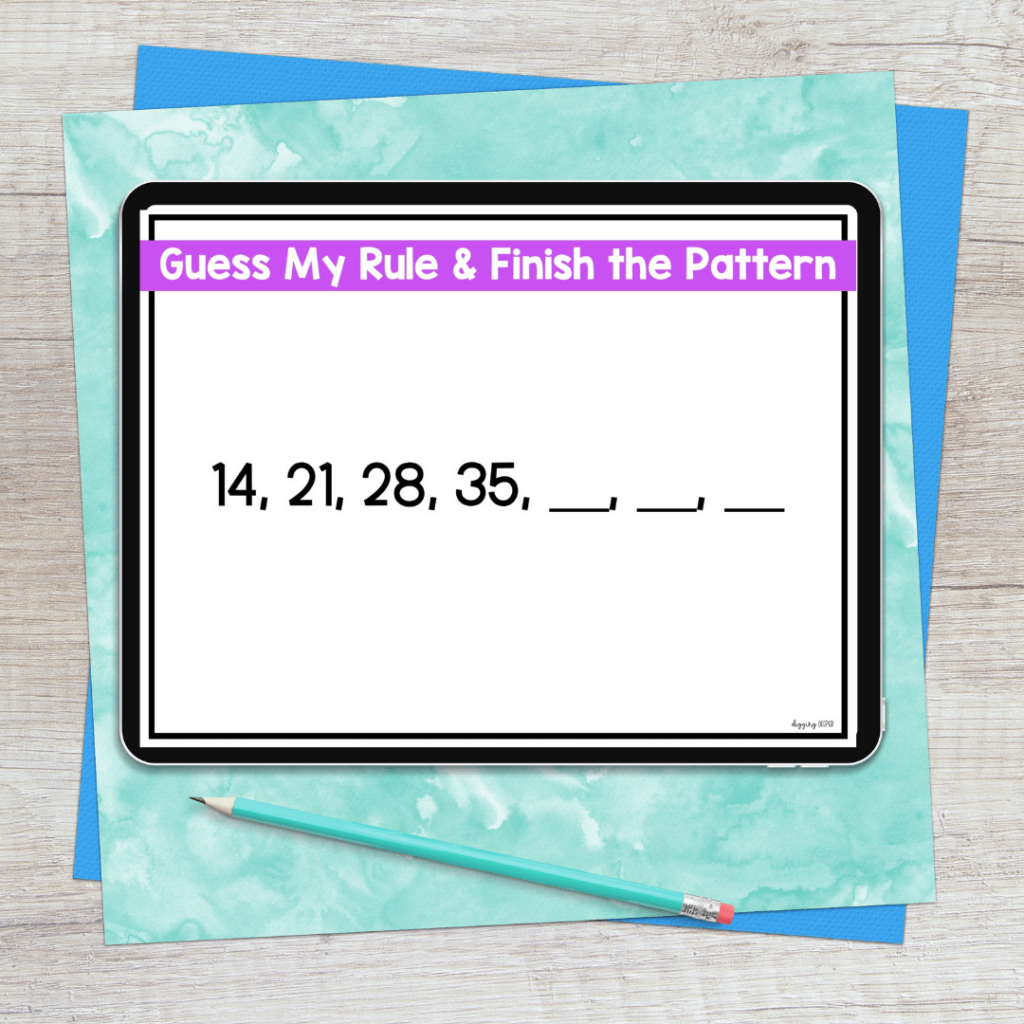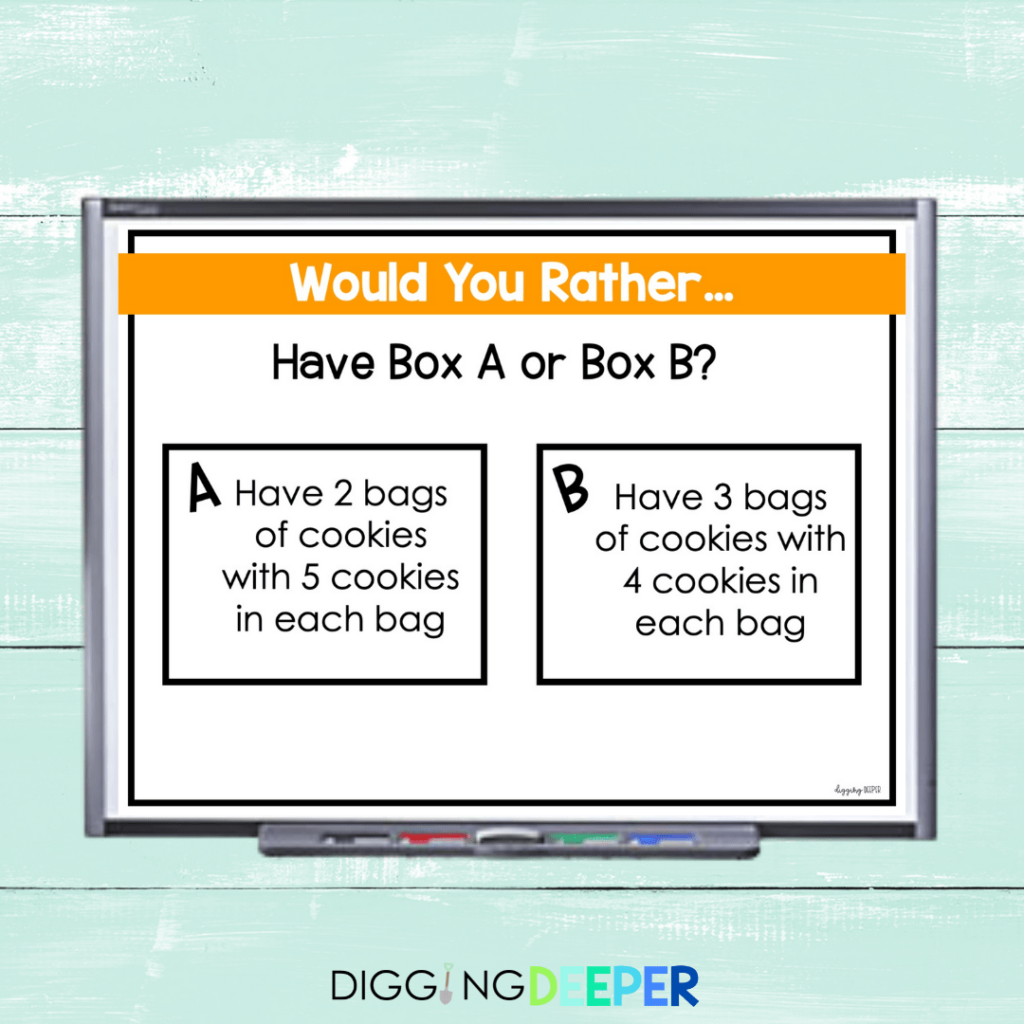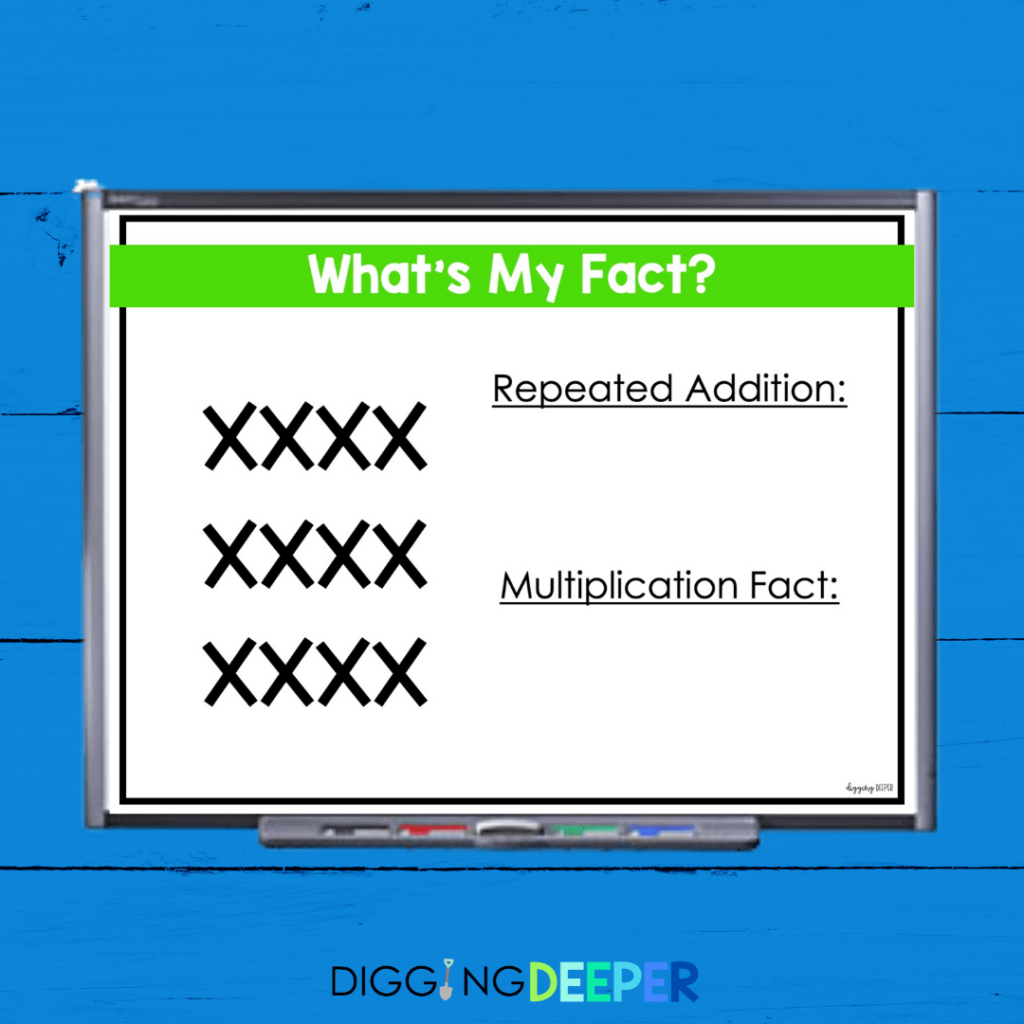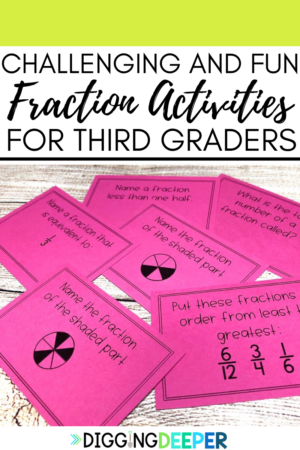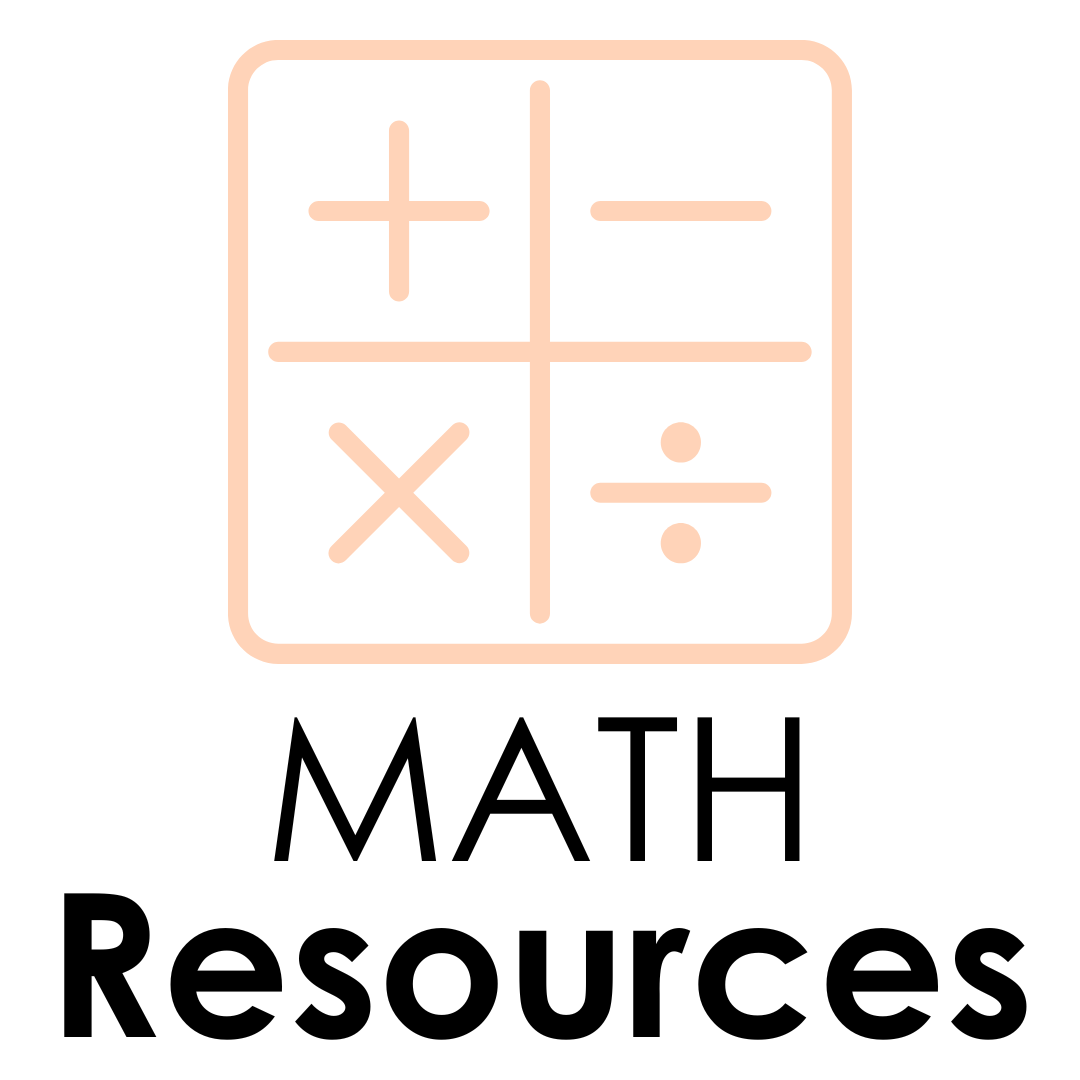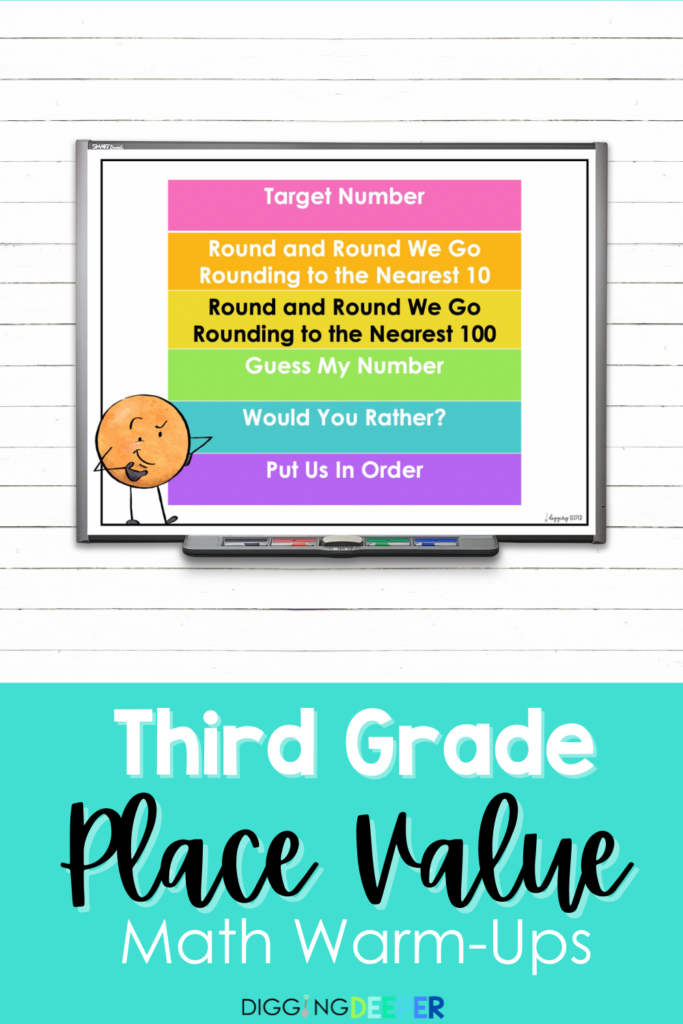The beginning of the school year is an excellent time to get your number talks routine off to a great start. While you are preparing for back to school, consider these tips to add a number talks routine to your day. Today I’ll share several things to think about when beginning your number talks routine this school year.
Dive Right In!
The key to establishing any successful routine during a new school year is to engage your students from day one. Get your students excited about math while they are still pumped about being back at school.
Dedicate Time for Number Talks
The first week of school is extremely busy. You’re so busy establishing routines & procedures and getting to know your students. It’s easy to skip over items on your schedule when your day gets hectic.
Don’t let this happen with your number talks time. Devote time in your schedule for 10-15 minutes for number talks. You will need more time at the beginning while you are teaching your students how to do this activity. During the first few weeks of school, you may need as much as 20 minutes. But once your students get the hang of the routine, it won’t take near as long.
By establishing a set amount of time for number talks, you are showing your students that this is an important activity. This also ensures that you have adequate time for your students to discuss and share their thinking.
Making time for number talks every day sends a clear message to your students that sharing about math is important.
Your number talk time should be either included in your math block, or set for a separate time of the day. Look at your schedule and find a few minutes of time during your day when you can get your students talking about math.
Number Talk Routine Procedures
Establish your number talk routine expectations during the first week of school. Spending time teaching these procedures during the first week, will ensure that your students are ready to really focus on the math skills during number talk time. Students will know exactly what you expect from them during this time.
Before deciding on your routines, you should think about these things:
- Where will students sit? On the carpet? In their seats?
- How will students work out the math? Mentally? On white boards? Using scratch paper?
- How will students share their thinking?
- Will you use hand signals?
- How will students show you they have an idea to share?
- How will you choose students to share with the whole group?
- Will you allow students to think-pair-share?
Once you have answered these questions, you can begin to teach students the procedures you’ll need for your number talk time to run smoothly.
Content for Number Talks
Planning in advance is critical for your time to run smoothly. You’ll need some quick activities for each day. Be sure to choose activities that will get your students thinking. I also like to choose activities that can be solved using different strategies.
It’s so insightful for students to hear their peers explain how they solved the problem. I often will allow students to show their different methods on the board for other students to see. By doing this, your students become teachers without even realizing it!
A Glimpse into my Number Talks Routine
My number talks routine is one of my favorite parts of the day. I love hearing my students discuss their thinking. I really believe my students grow tremendously from this simple activity. I’ve written about my number talks routine below so you can see how it runs in my classroom:
- Digital Number Talks: I plan my number talks digitally and project them for my students. This saves me a ton of time. My class has specials right before math class. So, I pull up my number talks and have them on the board when students walk in the room.
- I allow my students to use white boards to show their work. After projecting the activity, I give my students 3-5 minutes to work. There is no talking during this time, because I really want every student to have an opportunity to think. Providing thinking time is CRUCIAL. Don’t let your high-achieving students set the pace for your class. When you allow wait time, or thinking time, you make the math more accessible for all students. This also gives you a chance to go check in with students who may need support from you.
- Once students have had ample time to think of the answer, we have a math discussion. I begin by allowing students to turn and talk to their peers. During this time, I listen in to several conversations. This is great because it gives students time to share with one other person before sharing with the entire group. It’s also a good way to quickly clear up some misconceptions.
- Following think-pair-share time, I allow several students to share their thinking with the entire class. I will often call on a student who I heard say something remarkable during the partner talk time.
Teacher Choices:
As mentioned above, there are some things for you to consider before having number talks with your students.
For the discussion, you may want to use hand signals. I teach my students to wiggle their pinky and thumbs if they agree with what another student has said. It’s a great quick engagement strategy that many teachers use in the classroom.
I love when my admin walks in while students are doing their hand motions. They are always impressed that students automatically signal when they agree without any prompting from me. I specifically introduce this signal the first week of school, but it doesn’t take long before students are using it daily. I see it during reading discussions, in science class, etc.
You also need to decide if you want students to only work mentally, or if you are going to allow them to show their work. In my classroom, this depends on the activity type. If we are doing computation, I may only let students use mental math. But, if we are working on fractions, I’ll let them have a whiteboard to show their work.
I know from personal experience that not all brains are wired for mental math. It can create a lot of unnecessary stress on students (I was one of those students!). So, allowing students to draw or solve problems on the whiteboard helps them to better prepare for the math discussion.
For me, the heart of my number talk time is the TALK time. So, it’s ok with me if students need to prepare on the whiteboard beforehand.
Get Started with Number Talks
If you’re looking for an easy way to get students talking about math, you’ve got to try these Digital Number Talks. I’ll send you 5 free place value number talks to try with your students.
I’ll also send you tips for having number talks in your classroom. I know you’ll be impressed by the conversations you hear in your classrooms! Does this sound like something you need?
Click here for a sample of the Place Value Number Talks that I use with my third-grade students. The images pictured above are from my Multiplication Digital Number Talks.

I have specifically created these number talks to save third-grade teachers precious time. Teachers rave about the quality of discussions sparked by these simple activities. I can’t wait to hear what you think!

